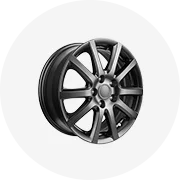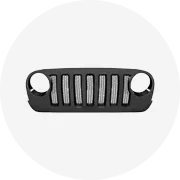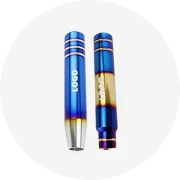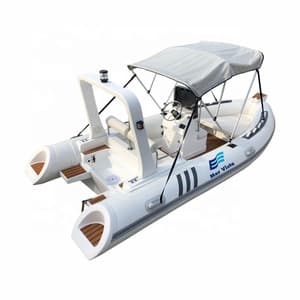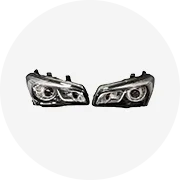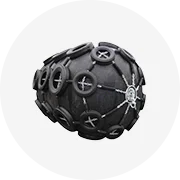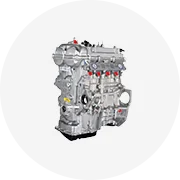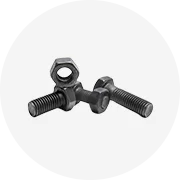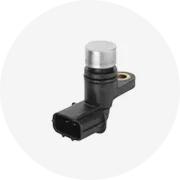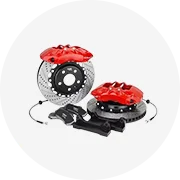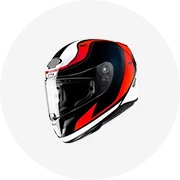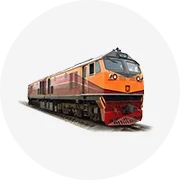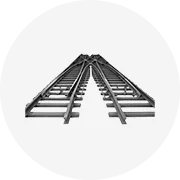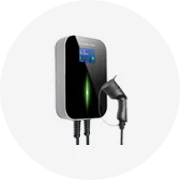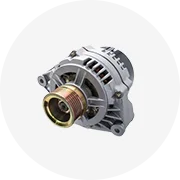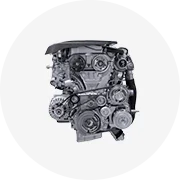Types of Chevrolet S10 Front Bumpers
The Chevrolet S10 front bumper is an essential component that protects the vehicle's front-end structure during collisions. Beyond protection, it contributes to aerodynamics, potentially improving fuel efficiency and stability at higher speeds. Some models feature integrated air dams or spoilers to enhance these benefits.
Steel Bumpers
Crafted from high-grade steel, these heavy-duty bumpers are designed for maximum durability in tough environments and extreme off-road conditions.
- Strength: Exceptional durability with high-impact protection
- Customization: Compatible with winch mounts, light bars, and D-ring attachments
- Recovery: Integrated towing hooks for off-road vehicle recovery
Plastic Bumpers
Manufactured from high-strength polypropylene or ABS plastic, these lightweight bumpers offer cost-effective protection with several unique benefits.
- Corrosion: Excellent resistance to rust and environmental damage
- Noise: Superior vibration and noise reduction properties
- Impact: Better energy absorption in low-speed collisions
Aluminum Bumpers
Providing an optimal balance between strength and weight reduction, aluminum bumpers offer a practical middle-ground solution.
- Weight: Significantly lighter than steel for improved fuel efficiency
- Corrosion: Strong resistance to water and salt exposure
- Aesthetics: Attractive metallic finish for enhanced vehicle appearance
Bumper Material Comparison Chart
Specifications & Components
| Component | Material | Function |
|---|---|---|
| Bumper Cover | Plastic/Composite | Provides aerodynamic exterior appearance and minor impact protection |
| Bumper Reinforcement | Steel/Aluminum | Provides structural support and distributes impact forces |
| Bumper Absorber | Foam/Energy-absorbing material | Absorbs impact energy to reduce collision severity |
| Impact Strips | Rubber/Plastic | Protects against minor impacts and scratches |
| Mounting Brackets | Steel | Secures bumper to vehicle frame |
| Sensor Mounts | Plastic/Metal | Houses parking sensors and adaptive cruise control equipment |
Standard Bumper
Factory-installed bumpers typically focus on meeting safety regulations while maintaining vehicle aesthetics.
- Designed for everyday driving conditions
- Balanced between weight and protection
- Matches vehicle's original design language
Specialty Bumpers
Aftermarket options designed for specific applications and enhanced capabilities.
- Brush Guards: Protection from branches and debris
- Winch Bumpers: Integrated mount for recovery equipment
- Rally Bumpers: Designed for motorsport applications
How to Choose the Right Bumper
Selecting the optimal Chevrolet S10 front bumper requires consideration of both vehicle requirements and intended use. This comprehensive guide will help you make an informed decision based on critical selection factors.
Expert Tip: Consider your primary driving environment when selecting a bumper. For primarily highway use, focus on aerodynamics and weight reduction. For off-road enthusiasts, prioritize durability and accessory mounting options.
| Consideration Factor | Important For | Recommendation |
|---|---|---|
| Intended Use | All buyers | Match bumper type to primary driving conditions (off-road, city, highway) |
| Material Selection | Performance balance | Steel for maximum protection, aluminum for balance, plastic for economy |
| Accessory Compatibility | Feature enhancement | Verify support for winches, lights, and recovery points if needed |
| Vehicle Compatibility | Proper fitment | Confirm exact year and model compatibility before purchase |
| Aesthetic Preference | Visual appeal | Consider how the bumper complements overall vehicle appearance |
Specialty Bumper Selection Criteria
Front Brush Guard
When selecting a brush guard, evaluate:
- Protection coverage for grille and headlights
- Material thickness and mounting stability
- Compatibility with factory fog lights
- Powder coating quality for rust prevention
Winch Bumpers
Key factors for winch bumpers include:
- Rated winch capacity support
- Integrated fairlead mounting
- Recovery point positioning
- Approach angle enhancement
- Cooling airflow maintenance
Rally Front Bumpers
For performance applications, consider:
- Weight reduction properties
- Auxiliary lighting integration
- Aerodynamic enhancement
- Impact absorption capabilities
- Quick-removal design for service access
Maintenance Guidelines
Proper maintenance of your Chevrolet S10 front bumper is crucial for preserving both its appearance and functionality. Follow these comprehensive maintenance practices to extend your bumper's service life.
Safety Note: Always inspect your bumper after any collision, no matter how minor. Structural damage may not be immediately visible but could compromise the bumper's protective capabilities in future impacts.
Regular Inspection
- Examine for cracks, dents, and scratches monthly
- Check mounting hardware for tightness and rust
- Verify sensor functionality if equipped
- Inspect accessory attachments and wiring
Cleaning Procedures
- Wash with mild automotive detergent regularly
- Use soft brush for textured surfaces
- Remove bug splatter promptly to prevent paint damage
- Apply automotive wax to painted bumpers quarterly
Preventative Care
- Apply UV protectant to plastic components
- Use anti-corrosion spray on metal components
- Touch up paint chips immediately
- Clear drain holes to prevent water accumulation
Winter Care Tip: In regions where road salt is used, rinse the bumper and its mounting hardware thoroughly at least weekly during winter months. Pay special attention to recessed areas and brackets where salt can accumulate and accelerate corrosion.
DIY Replacement Guide
Replacing your Chevrolet S10 front bumper can be accomplished as a DIY project with proper preparation and tools. Follow this step-by-step guide for a successful installation.
Replacement Procedure
- Gather necessary tools: Socket wrench set, ratchet, screwdrivers (flathead and Phillips), trim removal tools, and safety gloves.
- Purchase compatible replacement: Ensure the new bumper matches your specific S10 model year and trim level.
- Prepare the vehicle: Park on level surface, engage parking brake, turn off engine and remove keys.
- Remove the damaged bumper: Locate and remove mounting bolts (typically under the bumper and on sides), then carefully detach the bumper from the vehicle.
- Disconnect components: Detach electrical connections for fog lights or sensors, and remove any transferable components (grille, license plate bracket, etc.).
- Install the new bumper: Align with mounting points and press firmly to engage any clips or tabs.
- Reconnect electrical components: Reattach all wiring for lights and sensors if equipped.
- Verify alignment: Before final tightening, check that the bumper sits evenly and aligns properly with surrounding body panels.
- Secure all hardware: Tighten all bolts to recommended torque specifications (refer to service manual).
- Final inspection: Verify all connections, test any electrical components, and check for proper clearance around tires at full steering lock.
Important: Always consult your vehicle's service manual for specific torque specifications and any model-specific procedures. Improper installation can compromise safety systems and bumper performance during collisions.
Installation Tip: Take photos of the original bumper installation before removal to document wire routing, clip positions, and hardware locations. This visual reference can be invaluable during reassembly.
Frequently Asked Questions
Chevrolet S10 front bumpers are typically manufactured using three primary materials, each with distinct advantages:
- Steel: Offers superior strength and durability, ideal for off-road applications where impact resistance is crucial. Steel bumpers provide excellent protection but add significant weight to the vehicle.
- Aluminum: Provides a balance between weight and strength, with excellent corrosion resistance. Aluminum bumpers are approximately 30% lighter than comparable steel versions while maintaining good structural integrity.
- Plastic: Commonly used for factory bumper covers, plastic components are lightweight, cost-effective to produce, and can be molded into complex aerodynamic shapes. They offer good minor impact absorption but less overall protection than metal alternatives.
Yes, Chevrolet S10 front bumpers offer extensive customization options. Many manufacturers provide custom-designed bumpers with features tailored to specific applications:
- Material selection based on intended use (steel for maximum protection, aluminum for weight savings)
- Finish options including powder coating, chrome plating, or paint-matching
- Integrated accessories such as winch mounts, light bars, and D-ring recovery points
- Brush guard extensions for additional front-end protection
- Custom air dam designs for improved aerodynamics or engine cooling
Working directly with specialty manufacturers allows for completely bespoke designs to meet unique requirements for appearance or functionality.
Effective maintenance for Chevrolet S10 front bumpers involves regular:
- Inspection: Check monthly for structural issues like cracks, bends, or rust development, and address minor problems before they worsen.
- Cleaning: Wash regularly with automotive soap to remove road grime, bugs, and corrosive materials like road salt. Pay special attention to crevices and mounting points where debris can accumulate.
- Protection: Apply appropriate protectants based on bumper material - UV protectant for plastic, wax for painted surfaces, and corrosion inhibitor for metal components.
- Cautious Operation: Maintain awareness when driving off-road or on rough terrain to avoid unnecessary impacts. Be particularly careful of approach angles on steep inclines.
Repair possibilities depend on the bumper material and extent of damage:
- Minor Damage: Scratches, scuffs, and small cracks can often be repaired using appropriate techniques for the specific bumper material.
- Plastic Bumpers: Can be repaired using plastic welding, fillers, and refinishing for cosmetic damage. Heat can sometimes be used to reshape minor deformations.
- Metal Bumpers: Minor dents in steel or aluminum bumpers can sometimes be reshaped, and small cracks can be welded. Surface corrosion can be removed and treated.
- Extensive Damage: Bumpers with structural damage, severe cracks, or significant deformation generally require replacement for safety reasons. Attempting to repair severely compromised bumpers can result in reduced protection during future impacts.
Front bumper replacement time varies based on several factors:
- Average DIY Time: 2-4 hours for an experienced home mechanic
- Professional Service Time: 1-2 hours at a repair shop with specialized tools
- Factors Affecting Duration:
- Complexity of the specific S10 model year and trim
- Presence of accessories (fog lights, sensors, winch mounts)
- Condition of mounting hardware and attachment points
- Whether the replacement is OEM or aftermarket (fitment variations)
Additional time may be required if related components like the grille, headlights, or radiator support need adjustment or replacement following collision damage.







































